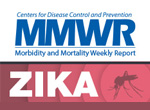The Ecology of Emerging Zoonotic Diseases
Date: Thursday, November 2, 2017
Time: 2:00-3:00 pm (Eastern Time)
Overview
Zoonotic viruses–those which are transmitted between animals and people, represent an important group of pathogens that are responsible for a growing number of significant epidemics. SARS coronavirus, Ebola, Nipah virus, avian influenza, and perhaps most importantly, HIV, are all recently emergent zoonotic viruses that originated in wild animal populations and have caused significant morbidity and mortality in human, and in some cases, animal populations. Zoonotic viruses can have profound health and economic impacts globally, even when occurring in relatively isolated regions, thereby making them a significant challenge for the global health community. The majority of viral pandemics are triggered by human activities such as deforestation, agricultural expansion and intensification, urbanization, hunting, travel, and wildlife trade. To be able to minimize the impact of emerging viral zoonoses requires an understanding of the viral diversity within key wildlife reservoirs, the types of human behaviors that increase exposure to an infection with zoonotic viruses, and the ability to rapidly identify the etiologic agent behind clusters of human or domestic animal disease so that effective interventions can be implemented. During this COCA Call, participants will gain a broad understanding of how spillover and disease emergence occurs. This COCA Call will use Nipah virus and Ebola virus as case studies and discuss effective interventions that reduce the risk of spillover of both known and unknown pathogens from wildlife. We will also discuss efforts that are currently underway to enhance the global community’s capacity to detect and respond to the emergence of novel zoonoses.
At the conclusion of the session, the participant will be able to accomplish the following:
- Describe how human activities drive zoonotic disease emergence—including examples of human behaviors that promote increased contact with wildlife
- Describe key elements of an ecological study of zoonotic viruses
- Explain how Nipah virus and Ebola emerged and why we continue to see outbreaks
- Explain why wildlife surveillance is important for protecting human and livestock health
Jonathan Epstein, DVM, MPH, PhD
Vice President for Science and Outreach
EcoHealth Alliance
- Audio conference call on Thursday, 11/02/17: 2:00 – 3:00 PM (Eastern Time)
- Web-on-demand training after 3:00 PM on 11/02/17
- Materials: PowerPoint slide set
No additional resources available at this time. Please check back later.
Continuing Education
- Activity number:WCWD2286(SC)
- Date of origination:December 12, 2013
- Date of renewal:December 12, 2015
- Date of expiration:December 12, 2017
- Prerequisites:None
- To earn continuing education/contact hours
Target Audience
- Physicians
- Nurses
- Pharmacists
- Veterinarians
- Physician Assistants
- Health Educators
- Other Clinicians
Hardware/Software
Additional Information
- Contact Information:coca@cdc.gov
- Support/Funding:Centers for Disease Control and Prevention, Emergency Risk Communications Branch
- Method of Participation:You may participate in the educational activity by viewing the program information above.
- Fees:COCA continuing education credits are free.
Accreditation Statements
ACCREDITATION STATEMENTS:
CME: The Centers for Disease Control and Prevention is accredited by the Accreditation Council for Continuing Medical Education (ACCME®) to provide continuing medical education for physicians.
The Centers for Disease Control and Prevention designates this live activity for a maximum of 1 AMA PRA Category 1 Credit™. Physicians should only claim credit commensurate with the extent of their participation in the activity.
CNE: The Centers for Disease Control and Prevention is accredited as a provider of Continuing Nursing Education by the American Nurses Credentialing Center’s Commission on Accreditation.
This activity provides 1.0 contact hour.
CEU: The Centers for Disease Control and Prevention is authorized by IACET to offer 0.1 CEU’s for this program.
CECH: Sponsored by the Centers for Disease Control and Prevention, a designated provider of continuing education contact hours (CECH) in health education by the National Commission for Health Education Credentialing, Inc. This program is designated for Certified Health Education Specialists (CHES) and/or Master Certified Health Education Specialists (MCHES) to receive up to total 1 Category I continuing education contact hours. Maximum advanced level continuing education contact hours available are 0. CDC provider number 98614.

CPE:The Centers for Disease Control and Prevention is accredited by the Accreditation Council for Pharmacy Education as a provider of continuing pharmacy education.
This program is a designated event for pharmacists to receive) 0.1 CEUs in pharmacy education. The Universal Activity Number is 0387-0000-17-194-L04-P and enduring 0387-0000-17-194-H04-P course category.
This activity has been designated as Knowledge-Based.
Once credit is claimed, an unofficial statement of credit is immediately available on TCEOnline. Official credit will be uploaded within 60 days on the NABP/CPE Monitor.
For Certified Public Health Professionals (CPH)
The Centers for Disease Control and Prevention is a pre-approved provider of Certified in Public Health (CPH) recertification credits and is authorized to offer 1 CPH recertification credit for this program.
CDC is an approved provider of CPH Recertification Credits by the National Board of Public Health Examiners. Effective October 1, 2013, the National Board of Public Health Examiners (NBPHE) accepts continuing education units (CEU) for CPH recertification credits from CDC. Please select CEU as your choice for continuing education when registering for a course on TCEOnline. Learners seeking CPH should use the guidelines provided by the NBPHE for calculating recertification credits. For assistance please contact NBPHE at http://www.NBPHE.org.
AAVSB/RACE:This program was reviewed and approved by the AAVSB RACE program for 1.0 hours of continuing education. Participants should be aware that some boards have limitations on the number of hours accepted in certain categories and/or restrictions on certain methods of delivery of continuing education. Please contact the AAVSB RACE program if you have any comments/concerns regarding this program’s validity or relevancy to the veterinary profession.
DISCLOSURE: In compliance with continuing education requirements, CDC, our planners, our presenters, and their spouses/partners wish to disclose they have no financial interests or other relationships with the manufacturers of commercial products, suppliers of commercial services, or commercial supporters. Planners have reviewed content to ensure there is no bias.
The presentation will not include any discussion of the unlabeled use of a product or a product under investigational use.
CDC did not accept commercial support for this activity.
TO EARN CONTINUING EDUCATION/CONTACT HOURS:
- Go to the CDC Training & Continuing Education Online System.
- Log in as a participant. If this is your first visit, you will need to register and establish a login name and password.
- Click on “Search and Register”
- Under “keyword search” find the course you are interested in by entering:
- “WC2286” for calls hosted in last 30 days
- “WD2286” for calls hosted past 30 days
- Select your course
- CE certificates can be printed immediately upon completion of your online evaluation.
IF YOU CANNOT PARTICIPATE IN THE LIVE COCA CONFERENCE CALL, YOU CAN STILL GET CE CREDIT/CONTACT HOURS
- Download the PowerPoint or webinar.
- Complete the on-line evaluation within a year (and follow the instructions above.)
- CE certificates can be printed immediately upon completion of your online evaluation.
- Page last reviewed: October 20, 2017
- Page last updated: November 3, 2017
- Content source:
- Maintained By:





 ShareCompartir
ShareCompartir
 =
=